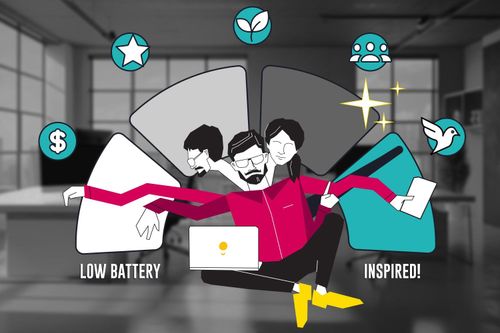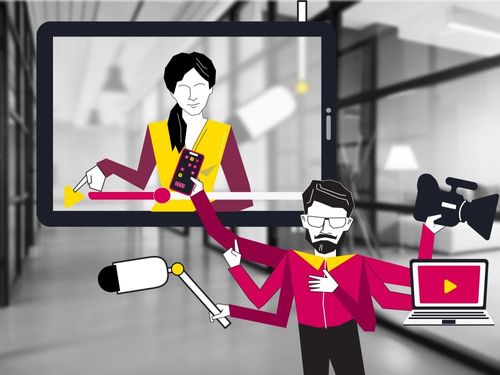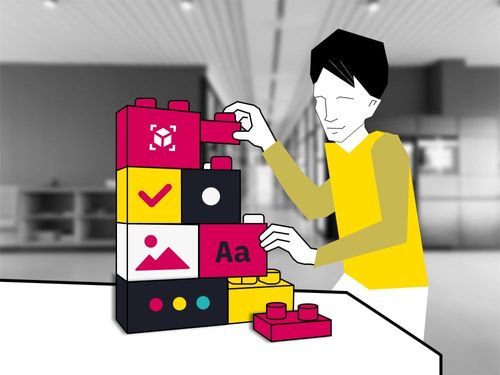
Employee turnover rate isn't just a number—it's a clear sign that something within your organization needs attention. Ignoring it means missing the chance to improve how your company operates.
In 2024, the turnover rate in software development reached 15.35%, according to Praisidio’s analytics. While this is significant, it’s still lower compared to other industries. For instance, sectors like construction and trade reported turnover rates as high as 54% and 49%, respectively.
Still, if you consider, industries such as legal services that maintain much lower rates, around 4.87%, have a lot of room for improvement.
The Cost of Replacement of Tech Employees
The cost of replacing tech staff is substantial. For tech roles, estimates show that the total cost to replace a developer, factoring in recruitment, onboarding, and lost productivity, can range between $12,862 and $22,739.
This includes direct costs (like recruitment, background checks, and training) and indirect ones (like lost productivity and time spent interviewing candidates).
You can estimate the turnover cost by multiplying each departing employee’s base salary by 33.3%.
Things Can Be Different
At Smartexe, we are proud that over 33% of our employees have stayed with us for over eight years. Compared to the tech industry, where the median tenure is just 3.5 years in the private sector, that’s a notable achievement (Bureau of Labor Statistics).
This kind of long-term retention results from deliberate efforts, from onboarding to career growth and fostering a culture where people feel valued and want to stay. But before we run towards a solution, let’s understand:
What Causes Turnover for Employers?
Employee turnover can be triggered by many factors that revolve around unmet expectations or unresolved dissatisfaction. One major reason is inadequate compensation.
The employees may be motivated to seek better opportunities elsewhere if they feel their pay doesn’t match their contributions or industry standards. Tech workers, in particular, are highly aware of market value, and minor salary discrepancies can push them toward competitors.
Another common cause is the lack of career growth opportunities. Employees look for roles that offer them better growth if they don't see a clear path to advancement within the company.
Similarly, workplace flexibility is now a key expectation. Employees who aren’t offered options like remote work or flexible hours can become frustrated, especially in industries where such flexibility has become standard.
Lastly, unsustainable workloads—long hours, high pressure, and lack of work-life balance—lead to burnout, making employees more likely to leave.
Strategies to Reduce Turnover
From our experiences at Smartexe and best practices across the industry, here are the strategies that have a proven impact on reducing turnover:
- Get Off to a Good Start High. Turnover often starts with bad onboarding. We found that pairing new employees with an experienced “buddy” during their first few months makes a big difference. This buddy system creates a welcoming, supportive environment, encouraging people to stick around.
- Keep Growing to Keep Them. If you want employees to stay, give them reasons to. At Smartexe, we host tech meet-ups where our team can play with new tools and share what they learn. This keeps things exciting and offers clear opportunities for growth and learning.
- Build a Strong, Positive Culture. A positive work culture makes employees feel valued. We focus on transparency and recognition. Regular team-building events and celebrating individual contributions have created a workplace where people feel connected to something bigger.
- Offer Performance-Based Perks. Keeping compensation competitive is key. We regularly review market trends and adjust salaries to meet expectations. We also offer perks like career growth opportunities, mentorship roles, or leadership positions on new projects. Small rewards, such as team activities or company-branded merch, also go a long way.
- Prioritize Work-Life Balance. Many employees today won’t compromise on work-life balance. Offering flexible hours and remote work options prevents burnout and creates a healthier work environment.
- Recognize Good Work. Simple recognition goes a long way. Whether it’s a thank-you note, a shoutout during a meeting, or performance-based rewards, acknowledging employees’ contributions boosts morale. At Smartexe, our recognition programs are a big part of why people stick around.
- Listen to Employees. Understanding what’s bothering employees before it becomes a reason to leave is essential. We conduct regular feedback sessions and surveys to track employees' feelings. Addressing issues early has helped us prevent dissatisfaction and turnover.
- Provide Clear Career Paths. People want to know there’s room to grow. By offering mentorship programs and internal promotions, we show our employees they have a future with us. When employees see growth opportunities, they’re less likely to leave.
But First Things First
Mitigating turnover starts from the hiring process. Ensure you bring in the right people who align with your company's culture. At Smartexe, careful hiring and strategic HR management have led to lower turnover rates and a more engaged, productive team.
Ready to Reduce Turnover? Consider our outstaffing services.
Give us a ping to see which of our organic teams are available today.
Like this article? Follow me and Smartexe for original content and insights on tech leadership, performance, and productivity.




















